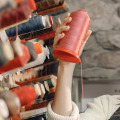With the emergence of digitized embroidery, there is no doubt that embroidery digitizing in usa will always be in demand and it’s important to learn about how to make sure you’re getting the highest quality digitized embroidery possible. Learn more about what aspects of your design need to be understood before you can expect a quality end result.
How to Digitize Embroidery
There are a number of factors that can affect the quality of embroidery digitizing. Here are some tips on how to get the best results:
- Use high-quality images: The better the quality of the image, the better the final digitized embroidery will look. Try to use images that are at least 300 dpi resolutions.
- Choose the right thread: The type of thread you use can make a big difference in the final result. For example, polyester threads are more durable and have more color options than cotton threads.
- Use the proper stabilizer: Stabilizers help to keep the fabric from stretching during embroidery and also prevent puckering. Choose the right stabilizer for your project – there are different types for different fabrics and applications.
- Digitize for the fabric: When you’re creating your design, take into account how the fabric will react during embroidery. For example, dense fabrics will require different settings than lighter-weight fabrics.
- Test your design: Before you stitch out your final design, test it on a scrap piece of fabric first. This will help you catch any errors and make any necessary adjustments before it’s too late.
- Finish the edges: Trim away excess fabric around the embroidered design, and then bind the edge with an overcast stitch to prevent unravelling.
- Wash and dry: Wash your new pillowcase in cold water on a gentle cycle, and then tumble dry on low heat or air dry.
What are the Important Factors that Influence the Quality of Embroidery Digitizing?
There are many factors that can influence the quality of embroidery digitizing. Some of the most important ones include:
- The quality of the original design: If you’re starting with a low-quality or badly designed image, it’s going to be very difficult to produce a high-quality embroidered version of it. Make sure you start with a good design before you even think about digitizing it.
- The skill of the digitizer: This is probably the most important factor. A skilled and experienced digitizer will be able to produce a much higher quality embroidery file than someone who is just starting out or doesn’t have a lot of experience. If you’re not sure about the skill level of the person you’re working with, ask to see some examples of their previous work.
- The quality of the embroidery machine: This is another important factor, especially if you’re planning on doing a lot of embroideries yourself. A high-quality machine will be able to produce better results than a lower-quality one, so it’s worth investing in a good machine if you’re serious about getting good results.
- The type of thread used: This is another big factor, especially when it comes to machine embroidery. Most of the time, a high-quality machine will come with its own thread. However, if you have a cheaper machine and you’re looking for better results, I recommend trying out different brands. I’ve found that many people get better results using quality sewing machine thread than they do use embroidery thread.
- The number of colors used: The more colors there are in your design, the more stitches are required to produce it which can slow down an advanced embroidery machine. If you’re unsure about how complicated your design might be, try making a mock up first.
How to Improve Quality of Embroidery Digitizing
There are a number of factors that can influence the quality of embroidery digitizing. Here are some tips on how to improve the quality of your digitizing:
- Use high-quality images: The quality of your digitized design will be directly influenced by the quality of the image you use. Make sure to use a high-resolution image for best results.
- Choose the right thread: The type of thread you use can also affect the quality of your embroidery. Choose a high-quality thread that is designed for machine embroidery to ensure the best results.
- Use proper stabilizer: Stabilizer is essential to successful machine embroidery. Use the proper type and amount of stabilizer for your project to ensure optimal results.
- Digitize carefully: Carefully consider all aspects of your design before you start digitizing. Pay attention to details such as stitch density, direction and placement of stitches, and more to ensure a high-quality final product.
By following these tips, you can help ensure that your machine embroidery projects turn out to look their best.
Conclusion
There are many factors that can affect the quality of embroidery digitizing, but some of the most important ones include the stitch type, density, and underlay. By understanding these factors and how they influence the quality of your embroidery, you can ensure that you always produce high-quality results. Are you new to embroidery digitizing? BitsnPixs is an online embroidery digitizing service provider that has been delivering the best quality digitizing for over a decade.






































No Comments